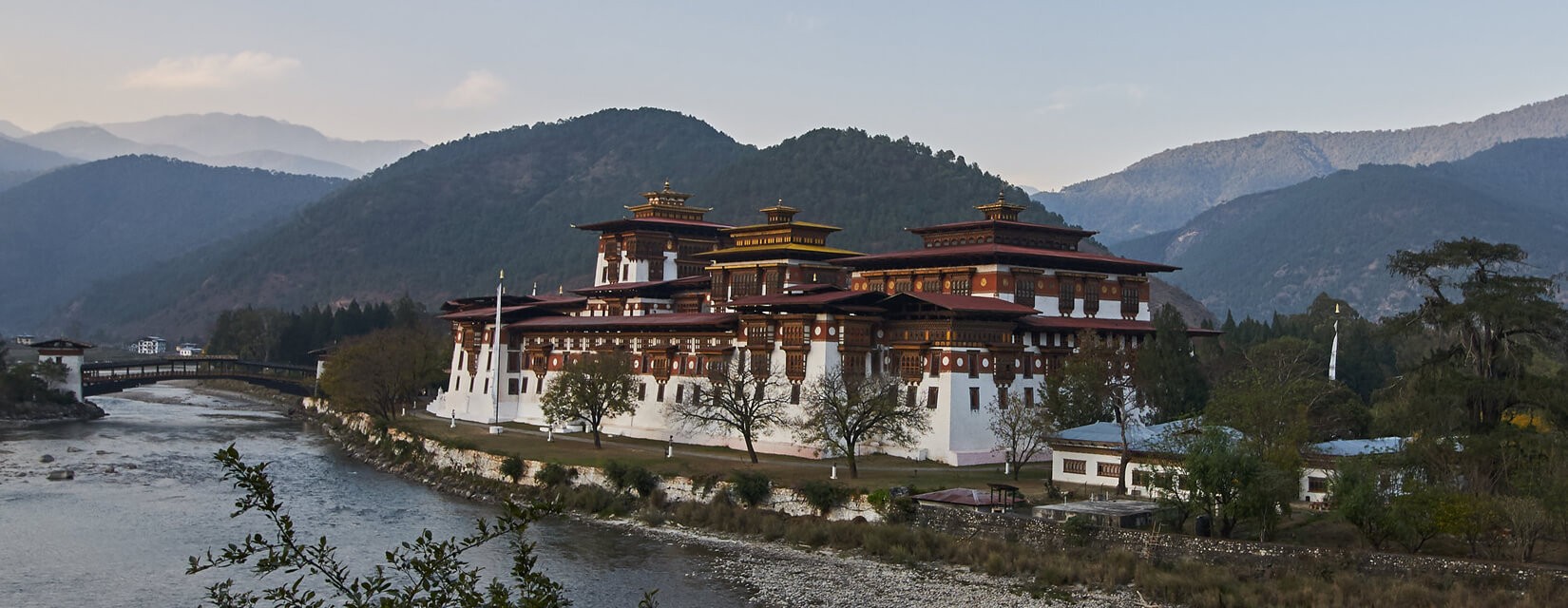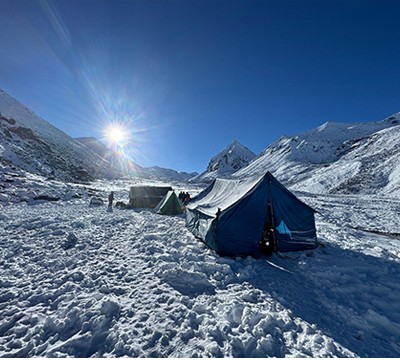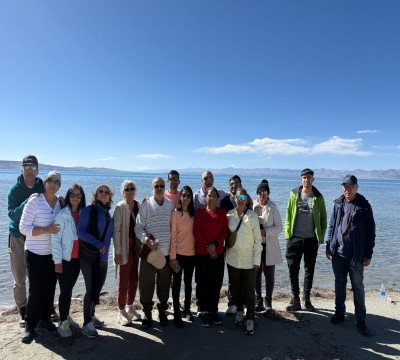Bhutan, the enchanting “Land of the Thunder Dragon,” is a kingdom that perfectly blends rich culture, stunning landscapes, and spiritual heritage. Did you know Bhutan measures its success through Gross National Happiness rather than GDP? This unique Himalayan nation is home to iconic landmarks like Paro Taktsang (Tiger’s Nest Monastery), the majestic Dochula Pass, and the vibrant Punakha Dzong, making it a top destination for Bhutan tours from Nepal. Travelers can experience Bhutan cultural tours, Bhutan trekking packages, and luxury Bhutan holidays while exploring its untouched natural beauty. For adventure enthusiasts, treks such as the Druk Path Trek in Bhutan and Laya Gasa Trek offer breathtaking Himalayan panoramas. Discover Bhutan’s festivals, monasteries, and traditional villages, and immerse yourself in a truly spiritual journey that only Himalayan Asia Treks can provide.
Amazing Facts About Bhutan 2026 | Culture, Nature & Travel Insights
Table of Contents
Bhutan, nestled in the heart of the Himalayas, captivates with its unique blend of tradition and modernity. Known as the Land of the Thunder Dragon, this small kingdom boasts breathtaking landscapes, from lush green valleys to towering snow-capped peaks. Bhutan is renowned for its commitment to Gross National Happiness, prioritizing the well-being of its citizens over economic metrics. Visitors are enchanted by the country's rich cultural heritage, showcased in its vibrant festivals, intricate architecture, and colorful traditional attire. As one of the world's last remaining Buddhist kingdoms, Bhutan offers spiritual sanctuaries like the iconic Tiger's Nest Monastery, perched precariously on a cliffside. For adventure seekers, trekking through pristine wilderness and encountering rare wildlife are must-do experiences. Himalayan Asia Treks and Expedition P Ltd provides immersive journeys to uncover the wonders of Bhutan, ensuring every traveler leaves with memories to last a lifetime.
There is an assortment of physical, political, populace, transportation, satellite, and vacationer traveling guides of Bhutan. It is found north of India, south of West Bengal, west of Sikkim, and east of Assam. The complete Geographical territory of Bhutan is around 38,394 km2, with the number of inhabitants in 750,125 and no more. Dzongkhags are a division of twenty regulatory regions in Bhutan. The fundamental method of transportation in Bhutan is air and roadways.
Notwithstanding, ropeways, and streams are accessible in not many spots. Yet, to visit Bhutan, road and air routes are the main two courses accessible. Bhutan targets keeping up a little over half of the timberland inclusion consistently. Also, Because of which, Bhutan is thickly secured with timberland. Farming is the foundation of Bhutan for, the absolute control of over 60% of the Bhutanese is horticulture. There are numerous Buddhist religious communities and sanctuaries with barely any Hindu covers.
Bhutan is isolated into Central, Western, Eastern, and Southern locales. Therefore, the most well-known spots to visit in Bhutan are Central and Western.
Bhutan Weather
Bhutan encounters four changed seasons summer, winter, spring, and fall. With the changing season, Bhutan experiences various atmospheres. In the southern piece of Bhutan, it is hot and sticky. Temperature shifts from 15-30 degrees Celsius. In focal Bhutan, the atmosphere is more occasional with warm summer and cool and dry winter. In the Northern pieces of Bhutan, it is a lot colder during winter with substantial snowfalls. The Indian summer Monsoon starts from late June through July till late September.
The dry spring begins from the early walk and lasts till Mid-April. Summer starts from mid-April till late June, with heavier summer downpours. Pre-winter starts from late September to late November, with heavy rainfall falls. Winter starts from November till March with ice all through the nation. Therefore, the best climate to visit Bhutan would be during spring with a moderate atmosphere. It is neither too hot nor freezing.
Best time to visit Bhutan
Differed seasons due to Indian storm which brings weighty downpour fall in Bhutan. The mid-year storm season in Bhutan begins from June to September with high stickiness. Pre-winter starts from October to November, which is generally radiant with someday off. Late November and early March is the dry season with a rainstorm. The best time to visit Bhutan would be during spring where the atmosphere is moderate.
The blossoms begin to bloom, and the Himalayan pinnacles are at the most noticeable with a clear sky. A large portion of the occasions in Bhutan occurs in this season. The low season is the season when there is substantial precipitation. In this season, traveling gets troublesome with barricades. Be that as it may, if you need to diminish your use, at that point, you should visit Bhutan during the low season when duty rates are less expensive. Pinnacle season is packed with individuals along these lines; if you are a harmonious darling, this season isn't for you.
Bhutan to Visit.
Bhutan is one of many best traveler objections around the globe. Notwithstanding, it is ideal to talk with a neighborhood travel planner about visiting Bhutan since access isn't extremely simple. You won't just observe the flawless condition and unique culture and conventional yet additionally experience endless undertakings. Bhutan, as a vacationer location, is exceptionally free from any dangerous spot to visit.
Barely any mainstream spots to visit in Bhutan are Tiger's home cloister, Punakha Dzong, Zuri Dzong, Gangtey valley, Phobjikha valley, and some more. If you love facing a challenge, at that point, there are endless exercises like climbing, kayaking, boating, and cycling. For nature and wild sweethearts, there are bounty natural life parks and plant parks. On the off chance that you need to have a genuine taste of rustic Bhutan, at that point, you can even remain as home-sat sightseers. You need not stress over the individuals since Bhutanese individuals are thoughtful and accommodating ordinarily. It is a sheltered nation to visit Bhutan.
Bhutan visit from Nepal
You can visit Bhutan through Kathmandu to Paro by flight. Nepal supplier offers bunch visits or private visits to Bhutan from Nepal. It investigates the origination of Buddha and takes the outing to a place known for thunder's mythical serpent. There is no preferable stumble over consolidate excursions of Nepal and Bhutan. They are the two final nations in the Himalayas where the lord, despite everything, rules over its kin. The outing will give you an incredible encounter to know the authentic Nepalese way of life and how it shifts from the Bhutanese lifestyle.
Nine Days Nepal Bhutan Tour visit takes you to visit the wonderful city of Kathmandu to the sacred valley of Paro and different renowned spots in Bhutan. Even though heading out to Bhutan in the wake of venturing out to Nepal may appear to be costly, you should recognize what is remembered for US 250 dollars. The visit cost incorporates convenience, suppers, driver, management, private vehicle, and so on, so it merits paying for the movement.
Places to visit in Bhutan
Western Bhutan
Individuals of the western area are known as "Ngalops," relatives of Tibetan migrants who showed up in Bhutan during the ninth century. A portion of the visits incorporates like Bhutan visit for seven days that will cover Western Bhutan.
Thimphu
Thimphu is the capital city of Bhutan, with a complete populace of 120000 individuals. Thimphu(2320m) turned into the capital in 1961 after a public parkway was fabricated, which interfaces Phuntsholing in the south, offering fringe with India to Thimphu. It is about an hour and a half drive from the air terminal in Paro.
Tashichho-Dzong
Well-known spots to visit in Thimphu incorporate Buddha Dordenma sculpture in Kuensel Phodrang; it's one of the most significant sculptures of Buddha on the planet with 51.2 m in tallness and can likewise do one hour climb from Buddha highlight Changangkha, a cloister primarily for the newly conceived infant. Furthermore, different spots are the people's legacy gallery, the Tashichho Dzong, the vegetable market. The market is loaded with neighborhood produce and handiworks, the material exhibition hall, Memorial Stupa, committed to the third lord of Bhutan, His highness the King Jigme Dorji Wangchuck.
Thimphu region extends past the town and goes till the Dochula la pass; this pass has 108 Druk Wangyel stupa on a slope and cloister on the head of the hill recounts to the tale of our fourth ruler, King Jigme Singye Wangchuk. Thus, on a brilliant day, you can see the all-encompassing perspective on the Himalayan Mountain.
Tiger-Nest-Monastery
Fascinating spots to see with regards to Paro incorporate the public historical center housed in a round fortification called the Ta Dzong and Paro Dzong. This Tiger Nest Monastery works as the Paro region's executive office. Different spots incorporate Drugyel Dzong, a seventeenth-century stronghold under control, devastated in a fire in 1951 and is under development right now. Finally, Taktsang (Tiger Nest) is one of the mainstream and notable profound destinations. It is a brief day climb of 1.5 hours to 2 hours to the top.
Punakha
Punakha(1300m) is the old capital of Bhutan, around two and a large portion of an hour's drive from Thimphu across Dochula pass. When you cross the key, you need to move down into a warm prolific valley and wander along a tenderly streaming greenish-blue waterway that drives you to the Punakha Dzong; the second most seasoned Dzong be inherent Bhutan.
Punakha-Dzong
Underlying 1637, the Dzong keeps on being the winter home for the ministry, headed by the central abbot, the Je Khenpo. It is a breathtaking case of Bhutanese design, sitting at the fork of two waterways, depicting the picture of a crude city from a good way. The Dzong was decimated by fire and icy floods throughout the long term; however, they have been painstakingly revamped and are, today, an exemplary case of Bhutanese craftsmanship. Punakha is a subtropical valley where food grains, vegetables, and natural products develop in luxuriousness.
A short drive up the valley is the Khamsum Yulley Chorten, built-in 1992 as one of three such chortens on the planet, one being the National remembrance Chorten in Thimphu.
Wangduephodrang
Toward the south of Punakha is the valley of Wangduephodrang (1350m), as the public interstate heads towards focal Bhutan. The old town, a narrow road with single celebrated shops, will do before long be supplanted by a new city buckled out of terraced rice fields. Wangduephodrang Dzong sits grandly on a precarious edge, ignoring the thruway that fork toward the east and south of the nation.
As the street heads towards Central Bhutan known as Trongsa, a mood killer beneath Pelela pass brings you into the enchanted valley of Phobjikha. It's known as Black-necked Crane that has been eluding Phobjikha as a winter home for Black-necked Crane for quite a long time. The flying creatures fly in from Tibet in October and nonmember and leave before spring.
Another Significant milestone in Phobjikha is the renowned Gangtey Goenpa religious community, implicit the seventeenth CenturyCentury.
Centre Bhutan
Trongsa
Around four hours' drive from Wangduephodrang is the focal District of Trongsa, the hereditary home of Bhutan's Royal Family and from where the initial two rulers governed the Kingdom. This 13-days-occasion to-Bhutan will cover Central and western Bhutan.
Trongsa-Dzong
Before you arrive at it, you see the sublime perspective on Trongsa Dzong in the valley place. Its maze of sanctuaries, passages, workplaces, and living quarters for the priests means a show-stopper in Bhutanese design rebuilding in 2004.
Trongsa is an excellent spot to end for the evening if you are going toward the east or the south of Bhutan. The Trongsa Tshechu (celebration) typically falls between late November and mid-December.
Bumthang
Bumthang (2600m – 4000m), which is situated in Central some portion of Bhutan, is frequently known as the otherworldly heartland of the Kingdom. There are numerous cloisters and magical places in this enchanting Bumthang valley where history and folklore help to bring alive a lot of Bhutan's way of life and conventions. Bumthang is a pleasant valley of lovely conventional houses and fields of buckwheat, grain, and apples.
Jakar-Dzong
A solid acceptance by the general population in profound diffuses the climate during the promising seasons. The valley echoes with the serenades of the otherworldly network as sanctuaries all over offer petitions for the prosperity of the apparent multitude of conscious creatures.
A portion of the well-known and significant sanctuaries incorporate Kurjey Lhakhang (related with Guru Rinpoche, who carried Tantric Buddhism to Bhutan and Tibet), Jambay Lhakhang, and memorable Jakar Dzong.
Bumthang's Tshechus/celebrations are notable, and even its little nearby celebrations are a benefit to go to get an understanding of the way of life and soul of Bhutan.
Eastern Bhutan
In the east, are Scharchops broadly accepted to be the first occupants of the nation? For the individuals who need to do eastern Bhutan, the visit will be extraordinary, unlike the Western Bhutan visit. This part is where individuals communicate in their language known as Sharchops, treasure their way of life, and weave beautiful materials.
Trashigang
Trashigang (1151m), the most prominent locale of Bhutan, is a 3.5-hour drive from monger and 547 km from Thimphu. The noteworthy Trashigang Dzong, on a vertically slope over the Sherichu waterway, is an exemplary case of the critical job that these religious fortifications played in keeping adversaries out in old occasions.
The Trashigang town has adroitly extended up the lofty mountainside to give necessities to the considerable populace that comes significant distances to shop here. We need to drive for half an hour from Trashigang town to reach Kanglung, which is another town that has developed around the nation's just school, offering college degrees to around 1000 understudies in various fields.
Trashi Yangtse
A 3.5-hour drive from Trashigang is Trashi Yangtse (1830m), the eastern home of the Black-necked crane, flanking the Indian locale of Arunachal Pradesh. Both Bhutanese and nearby clans from over the outskirt of India appreciate the celebration of Chorten Kora at Trashi Yangtse.
Tashiyangtse
The Southern area
Toward the South is the Lhotsampa. Generally, relatives of migrants from Nepal who were settled in Bhutan in the nineteenth century.
Samdrup Jongkhar
Samdrup Jongkhar is a tiny border town situated in Southeastern Bhutan and is six hours drive from Trashigang. It is one of the passage points for a traveler, the individuals entering Bhutan by street and its interface with Assam province of India.
This area is ideal for winged creature watchers since the climate here is commonly warm.
Phuntsholing
Phuntsholing (1829m) lies in the southwest of Bhutan and its second-biggest urban area. A bustling modern town is additionally one of the section points for the traveler who associate West Bengal territory of India.
The drive from Phuntsholing to Thimphu makes the excursion advantageous as the parkway takes you on a moderate excursion from the tropical fields by switching vegetation up to the higher elevations of the Himalayan Kingdom.
Meal
Bhutanese suppers are classified by the hot bean stew pepper and cheddar; set up them, and you have the public most loved dishes known as Ama Datshi (actually bean stew and cheddar). This fundamental dish has spun into various varieties: Kewa Datshi (potato and cheddar), Shamu Datshi (mushroom and cheddar). This future ordinary was accessible in most Bhutanese cafés.
The exceptionally famous dumpling or the momo is most loved and accessible either as cheddar momo or minced meat. Buckwheat hotcakes and noodles substitute rice as the most beloved staple in Bumthang.



